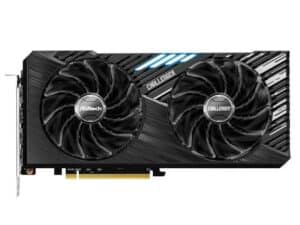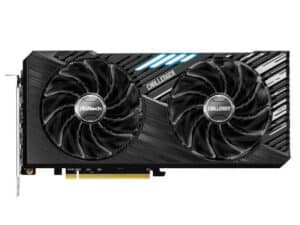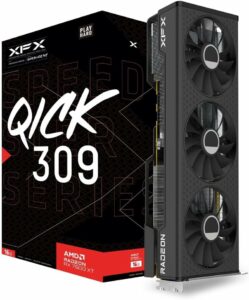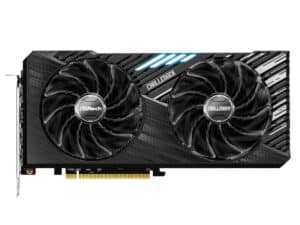Best RX 7600 XT graphics cards – our top picks

Table of Contents
Debuted at CES 2024, the RX 7600 XT is the latest addition to AMD’s 7000-series aimed at budget seekers, entry-level gamers, and general users who like a little more oomph in their setup. This time around, there’s no reference card from Team Red, so the matter of choosing the best RX 7600 XT becomes even more essential as there are many different variants offered up from across brands. Selecting the ideal feature set for your needs is no simple feat, but we’ve done the hard work for you here in selecting a lineup of reliable models of one of the best budget graphics cards to add to your setup.
We’ve had our fair share of hands-on experience with the card following our RX 7600 XT review, and we’re ready to share the lowdown on what we consider to be the top editions of AMD’s newest mainstream GPU. Let’s dive in.
Products at a Glance
How we picked the best RX 7600 XT
First off, choosing our lineup of the best RX 7600 XT cards required us to draw on a combination of market research and hands-on experience from in-house review, to get a feel for the card’s specs as well as where it sits on the performance podium in the realm of entry-level graphics cards. Comparable to the likes of the RTX 4060 in performance, the RX 7600 XT is built on the Navi 33 GPU with 2,048 Stream Processors, 64 ROPs, and 128 texture mapping units (TMUs) on a 128-bit memory bus. It pulls ahead of the original 7600 in a few ways: it’s faster straight out of the box, with a boost clock speed of 1,980 MHz, and doubles the VRAM from 8GB to an impressive 16GB – which is a lot considering its $329 MSRP. All in all, you’re getting a reasonably priced card that can offer a decent native 1440p performance, but that might be better suited for gamers rather than content creators.
However, our review isn’t the only important thing here – choosing a GPU requires a holistic approach, as what we’re really looking at here is what different users will need from their GPU, and we’ve tried to provide a range of options accordingly. The key factors we consider include thermal design and efficiency, noise levels, build quality, and additional features such as RGB lighting or software suites. For those more interested in the internal power side of things, we also consider each card’s factory overclocking settings and the potential for further manual tuning.
Product Reviews
- Efficient cooling with Windforce system and a triple fan setup
- Impressive boost clock speed of 2539 MHz
- Attractive RGB Fusion lighting adds a pop of color to your rig
- Bulkier form factor, longer and wider than some variants
- You'll need to have FSR upscaling activated to make the most of this card
- Outperformed by Nvidia alternatives
Gigabyte has really pushed the envelope with its Radeon RX 7600 XT GAMING OC model, and our top pick today just so happens to be our review unit. This GPU is a powerhouse for users seeking a robust, durable option that can withstand intensive gaming sessions and demanding applications. Its three-fan setup is not just a testament to its cooling capabilities but also to Gigabyte’s commitment to delivering high-performance hardware at an accessible price point.
The Gigabyte version of the 7600 XT has 3 fans, but the brand managed to maintain good measures: 281 mm. Not happy with that the brand included their Windforce cooling system which ensures that the GPU maintains optimal temperatures even under heavy loads. Specs-wise, the performance doesn’t disappoint either, and the robust cooling system is partly to cope with the impressive clock speeds on offer of 2539 MHz, which will see you soaring through 1440p. Our benchmarks were a testament to this too, as in Assassin’s Creed Mirage, the GPU was able to achieve an average of 91fps in 1080p and 67fps in 1440p. Other less demanding titles similarly impressed, and the RX 7600 XT had no problem blitzing straight through Doom Eternal with averages of 221fps in 1080p and 158fps in 1440p.
And to prove the GPU’s value, they also include DisplayPort 2.1 instead of the old 1.4 port. Gigabyte’s commitment to quality is evident in every aspect of this GPU, from its build to its performance, making it an excellent choice for gamers and power users alike.
- Compact design, one of the smaller variants of this card
- Strong clock speed of 2799 MHz
- Good thermal management to keep up with performance
- Higher 190W TDP, Gigabyte's is only 165W
- No DisplayPort 2.1, wheras this is on other cards
- Limited RGB features
For those who find three-fan GPUs too bulky, the ASRock Challenger Radeon RX 7600 XT 16GB offers a perfect balance between size and performance. Its compact and efficient dual-fan design makes it an excellent fit for almost any case, especially where space is a premium. This GPU is particularly appealing for builders who prefer a smaller footprint without sacrificing power.
The ASRock Challenger stands out due to its impressive performance packed in a compact size. Despite its relatively small length of 267 mm, this GPU doesn’t shy away from delivering robust power. Its strong boost clock speed of 2799 MHz ensures that it can handle demanding games and applications. The dual fan setup efficiently manages heat, maintaining optimal performance even during intense gaming sessions. Its compatibility with most ATX cases adds to its appeal for a wide range of system builders.
- Efficient TDP
- High boost clock speed
- DisplayPort 2.1 support
- Large size
- Dual 8-pin power connectors
- Higher price poin
XFX has established itself as a leading brand in the GPU market, particularly for entry-level and mid-range graphics cards. The XFX Speedster QICK309 stands out as the top choice in the RX 7600 XT lineup. This distinction is earned through its superior connectivity options, including three DisplayPort 2.1 and one HDMI 2.1, coupled with an efficient thermal design power that ensures optimal performance without excessive power consumption.
By boosting the GPU’s clock speed to an impressive 2810 MHz while maintaining a TDP of just 165W, they’ve managed to strike a perfect balance between power and efficiency. This higher clock speed translates to improved frame rates and smoother gameplay: an ideal choice for gamers who demand high performance without pushing their systems to the limit.
However, the XFX Speedster QICK309’s strength is also its weakness. The GPU’s considerable size, spanning 302 mm in length and requiring 2.5 slots, might pose a challenge for smaller PC cases. While this size accommodates more robust cooling solutions, it could restrict airflow in compact builds.
- High boost clock speed
- Great design
- Three fans
- No DisplayPort 2.1
- Big in size
- 190 W TDP
ASRock’s Steel Legend Radeon RX 7600 XT stands out for its flair and performance. It’s not just a GPU; it’s a statement piece with its aggressive design and RGB elements that will appeal to gamers who love to showcase their rigs. The triple-fan design isn’t just for looks—it plays a crucial role in keeping the card cool under pressure, making it a perfect match for visually intensive games.
Performance-wise, the ASRock Steel Legend doesn’t disappoint. Its high boost clock speed of 2810 MHz ensures that it can handle the latest games with ease, providing smooth and responsive gameplay. This makes it a top choice for gamers looking to push their systems to the limit. The attention to detail in its design is matched by its strong performance, proving that ASRock has successfully merged aesthetics with functionality.
Features and considerations
When selecting the best RX 7600 XT, it’s essential to look beyond the base specifications and focus on the additional features that different manufacturers offer. Each variant of the RX 7600 XT may come with unique cooling solutions, factory overclocks, and design aesthetics that can significantly influence performance and user experience.
Cooling efficiency is paramount, as better thermal management directly translates to more consistent performance and potentially longer GPU life. Overclocking capabilities are also crucial, especially for gamers and enthusiasts looking to squeeze out every bit of performance. However, to fully optimize your system to juice the most out of this 1440p gem, we’ve got you covered with our picks of the best CPU for the RX 7600 XT, and the best PSU for the 7600 XT to get you set with paramount cooling and power.
How many watts is the RX 7600 XT?
The RX 7600 XT has a thermal design power (TDP) of 190W. This means it requires a power supply that can adequately support this power draw, along with the rest of your system’s components. It’s crucial to choose a PSU that not only meets this requirement but also offers some headroom for stable and efficient performance.
Our Verdict
The RX 7600 XT series offers a diverse range of options catering to various preferences and requirements. Whether you prioritize a compact design, high clock speeds, efficient cooling, or striking aesthetics, there’s a model that fits the bill. The XFX Speedster QICK309 stands out for its efficient TDP and high boost clock speed, making it a top choice for those seeking performance and efficiency.
For those who prefer a more compact GPU, the ASRock Challenger provides strong performance in a smaller package. Gigabyte’s GAMING OC variant excels with its superior cooling system, and the ASRock Steel Legend captures attention with its gamer-oriented design. Each of these GPUs brings something unique to the table, ensuring that whether you’re a gamer, content creator, or general user, you’ll find a 7600 XT variant that aligns with your specific needs.






